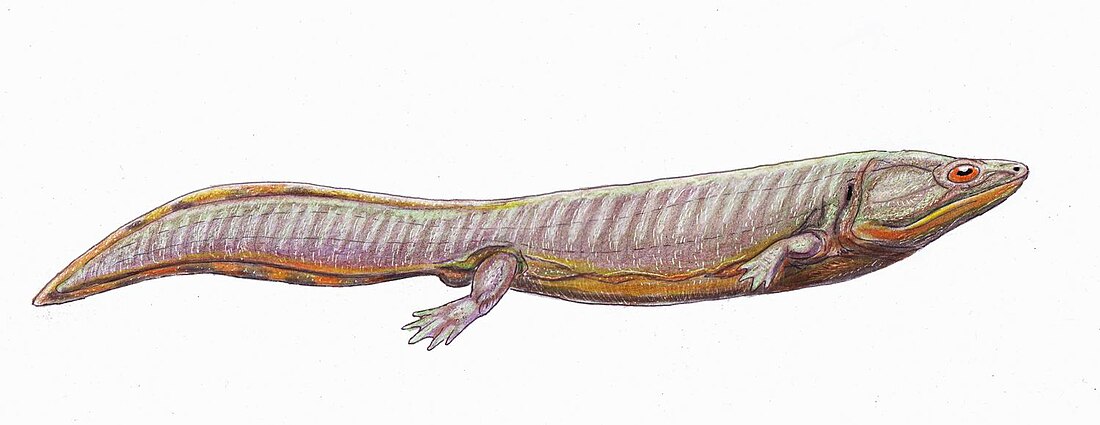Dvinosaurs are one of several new clades of temnospondyls named in the phylogenetic review of the group by Yates and Warren 2000. They represent a group of primitive semi-aquatic to completely aquatic temnospondyls, and are known from the Late Carboniferous to the Early Triassic, being most common in the Permian period. Their distinguishing characteristics are a reduction of the otic notch; the loss of a flange on the rear side of the pterygoid; and 28 or more presacral vertebrae.
| Dvinosauria Temporal range: Late Carboniferous - Early Triassic, | |
|---|---|
 | |
| Dvinosaurus primus | |
| Scientific classification | |
| Domain: | Eukaryota |
| Kingdom: | Animalia |
| Phylum: | Chordata |
| Order: | †Temnospondyli |
| Suborder: | †Dvinosauria Yates and Warren, 2000 |
| Subgroups | |
| |
Trimerorhachidae is the most basal family of dvinosaurs. Most other dvinosaurs are placed in the superfamily Dvinosauroidea. Within Dvinosauroidea are two families, Eobrachyopidae and Tupilakosauridae, as well as dvinosaurs that cannot be placed in either family, such as Dvinosaurus and Kourerpeton. A 2008 phylogenetic analysis found Eobrachyopidae to be paraphyletic, representing a grade of basal dvinosauroids. Below is a cladogram showing the phylogenetic relationships of dvinosaurs from Englehorn et al. (2008):[2]
| Dvinosauria |
| ||||||||||||
References
External links
Wikiwand in your browser!
Seamless Wikipedia browsing. On steroids.
Every time you click a link to Wikipedia, Wiktionary or Wikiquote in your browser's search results, it will show the modern Wikiwand interface.
Wikiwand extension is a five stars, simple, with minimum permission required to keep your browsing private, safe and transparent.
